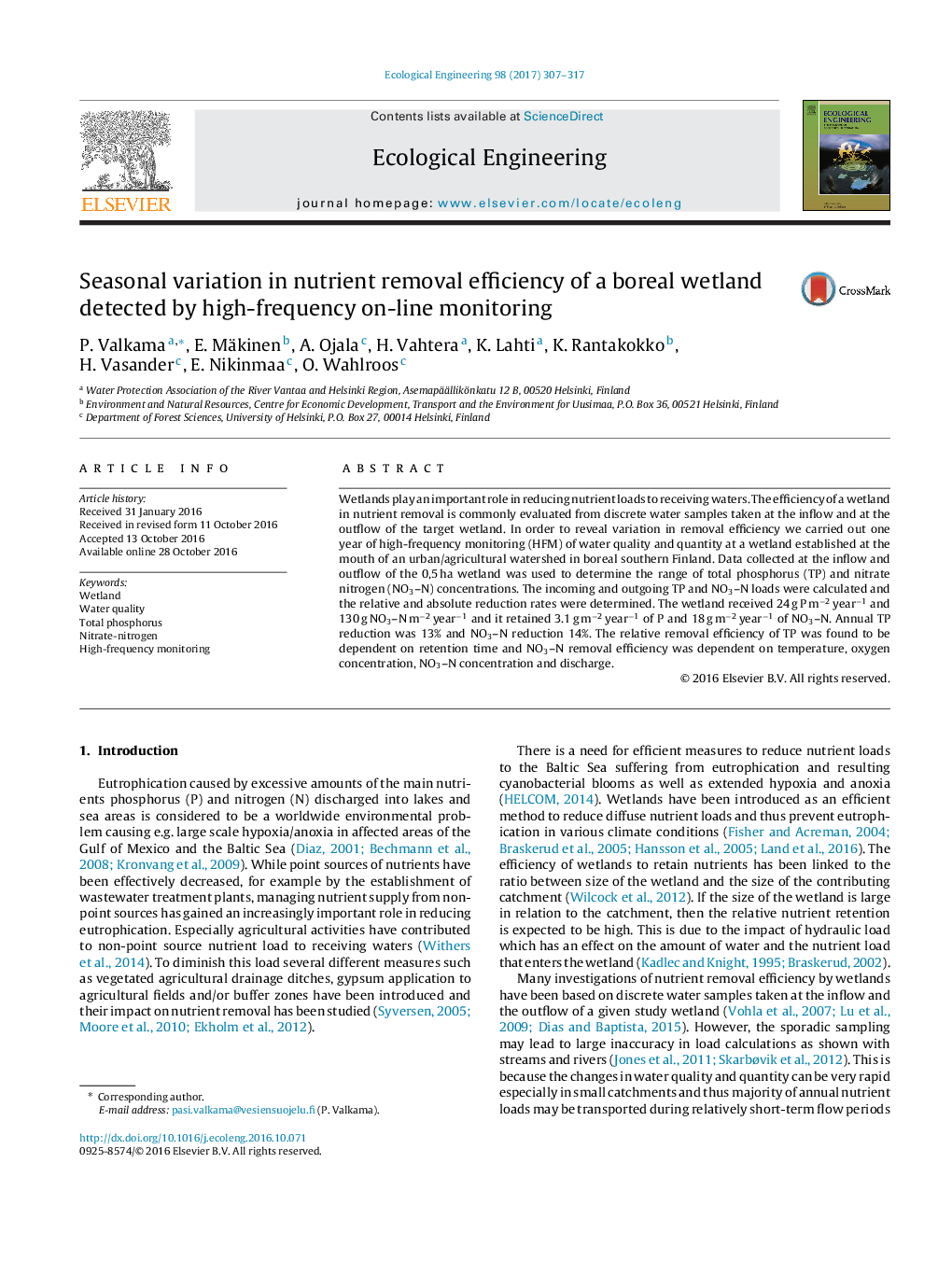| Article ID | Journal | Published Year | Pages | File Type |
|---|---|---|---|---|
| 5744032 | Ecological Engineering | 2017 | 11 Pages |
Wetlands play an important role in reducing nutrient loads to receiving waters. The efficiency of a wetland in nutrient removal is commonly evaluated from discrete water samples taken at the inflow and at the outflow of the target wetland. In order to reveal variation in removal efficiency we carried out one year of high-frequency monitoring (HFM) of water quality and quantity at a wetland established at the mouth of an urban/agricultural watershed in boreal southern Finland. Data collected at the inflow and outflow of the 0,5 ha wetland was used to determine the range of total phosphorus (TP) and nitrate nitrogen (NO3-N) concentrations. The incoming and outgoing TP and NO3-N loads were calculated and the relative and absolute reduction rates were determined. The wetland received 24 g P mâ2 yearâ1 and 130 g NO3-N mâ2 yearâ1 and it retained 3.1 g mâ2 yearâ1 of P and 18 g mâ2 yearâ1 of NO3-N. Annual TP reduction was 13% and NO3-N reduction 14%. The relative removal efficiency of TP was found to be dependent on retention time and NO3-N removal efficiency was dependent on temperature, oxygen concentration, NO3-N concentration and discharge.
